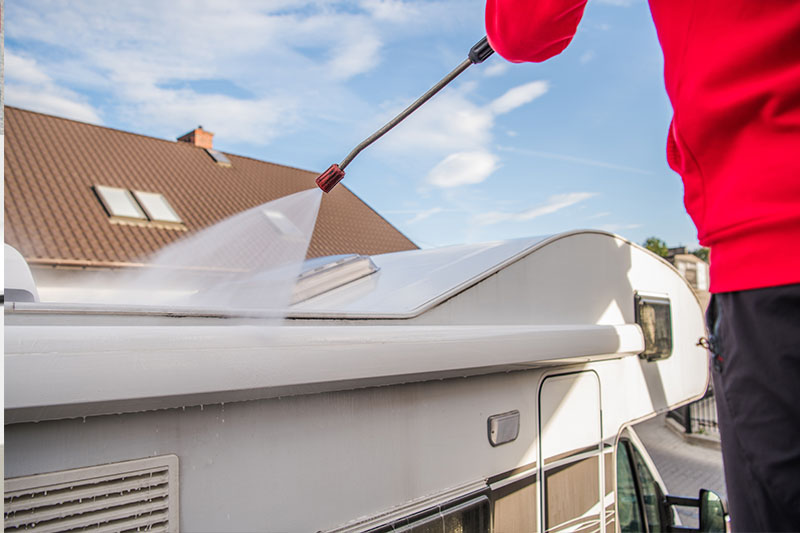RV Roof Reseal Service Cody, WY

Ensuring a Safe and Dry Journey on the Road
Your RV is more than just a vehicle; it's your home on wheels. Just like any home, it needs maintenance to remain a comfortable and safe space. One of the most overlooked yet critical areas for upkeep is the roof. A leaking RV roof can lead to a myriad of problems, from water damage to mold growth. In this article, we'll explore the importance of resealing your RV roof and guide you through the process.
What is Roof Resealing?
Roof resealing is the act of applying a new sealant layer to the roof of your RV. This sealant acts as a waterproof barrier, preventing moisture from seeping into your RV. Over time, the existing sealant can wear off, crack, or peel away, leaving your roof vulnerable to leaks.
Why is it Important?
- Protection Against Water Damage: The most immediate threat of a leaky roof is water damage. From the ceiling and walls to your appliances and furniture, water can wreak havoc inside your RV.
- Mold and Mildew Prevention: A damp environment is a breeding ground for mold and mildew, which can pose health risks.
- Structural Integrity: Consistent water leakage can weaken the RV's structure, leading to expensive repairs down the line.
- Energy Efficiency: A well-sealed roof can also improve the insulation of your RV, making it more energy-efficient.
Signs You Need to Reseal Your Roof
- Cracks or peeling in the existing sealant
- Water stains on the interior ceiling or walls
- Unexplained musty odors
- Physical water leaks during or after rain
Steps for Resealing Your RV Roof
- Inspection: The first step is a thorough inspection of your RV roof. Look for any signs of wear and tear or damaged sealant.
- Cleaning: Before you apply new sealant, it's crucial to clean the roof surface thoroughly. A clean surface will ensure better adhesion for the new sealant.
- Removing Old Sealant: Scrape off any old, damaged sealant carefully to prepare the surface for the new layer.
- Application: Apply the new sealant as per the manufacturer's instructions, making sure to cover all seams, joints, and potential leak points.
- Drying: Allow sufficient time for the sealant to dry and set, as recommended by the manufacturer.
- Final Inspection: Once the sealant is dry, inspect your work to ensure complete coverage.
Types of Sealants
Selecting the right type of sealant is crucial. Silicone-based sealants are generally more durable and weather-resistant, while acrylic sealants might be easier to apply.
Professional Services
Not comfortable doing it yourself? Whitlock Motors & RV offers top-notch RV services, including roof resealing, to keep your RV in peak condition.
Your RV's roof is its first line of defense against the elements. Make sure it's in the best condition possible by checking the sealant regularly and resealing as necessary. A well-maintained roof ensures you can focus on the adventure ahead, knowing you're protected from the top down.
Whitlock Motors & RV - Where Our Name Means A Great Deal

